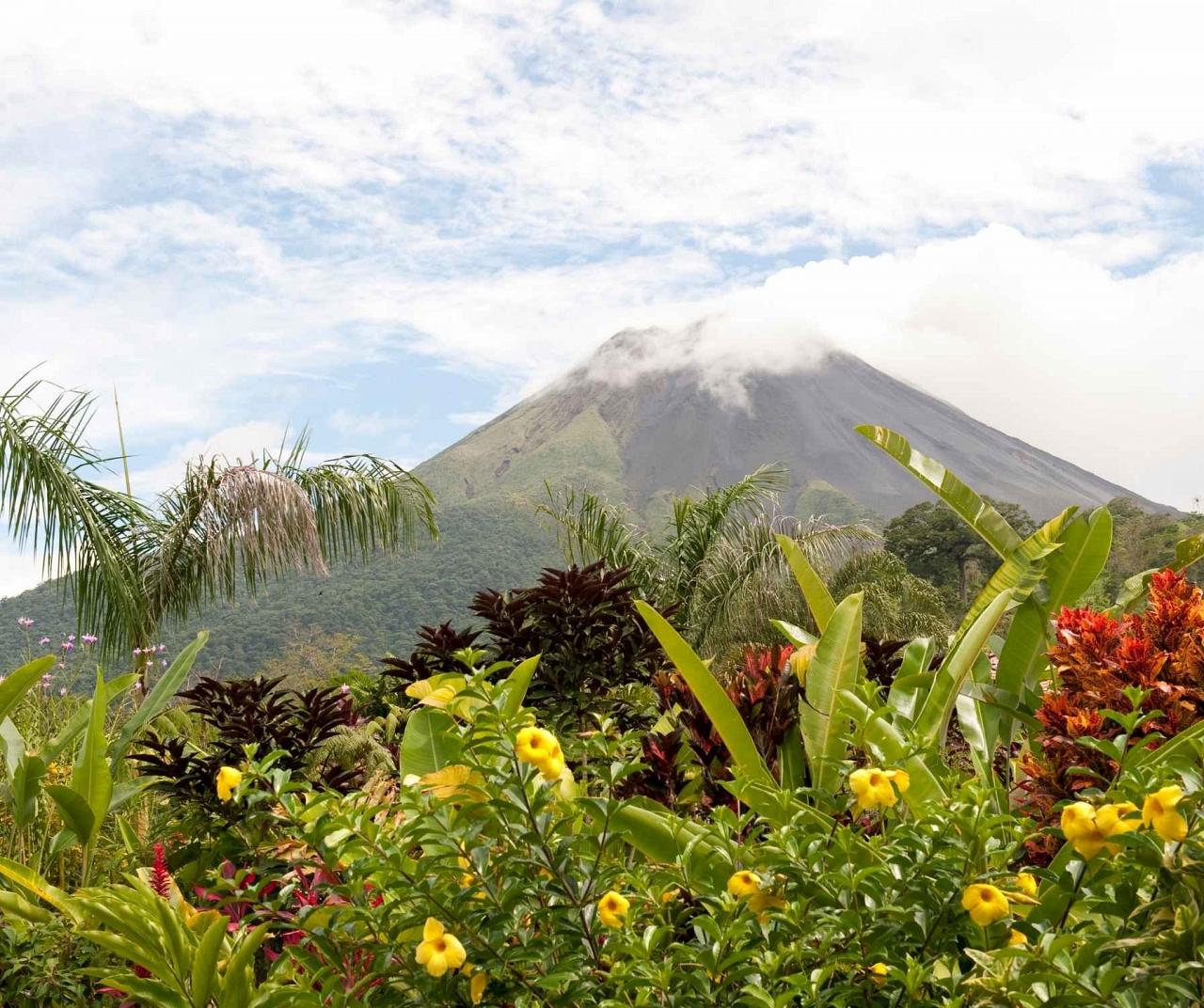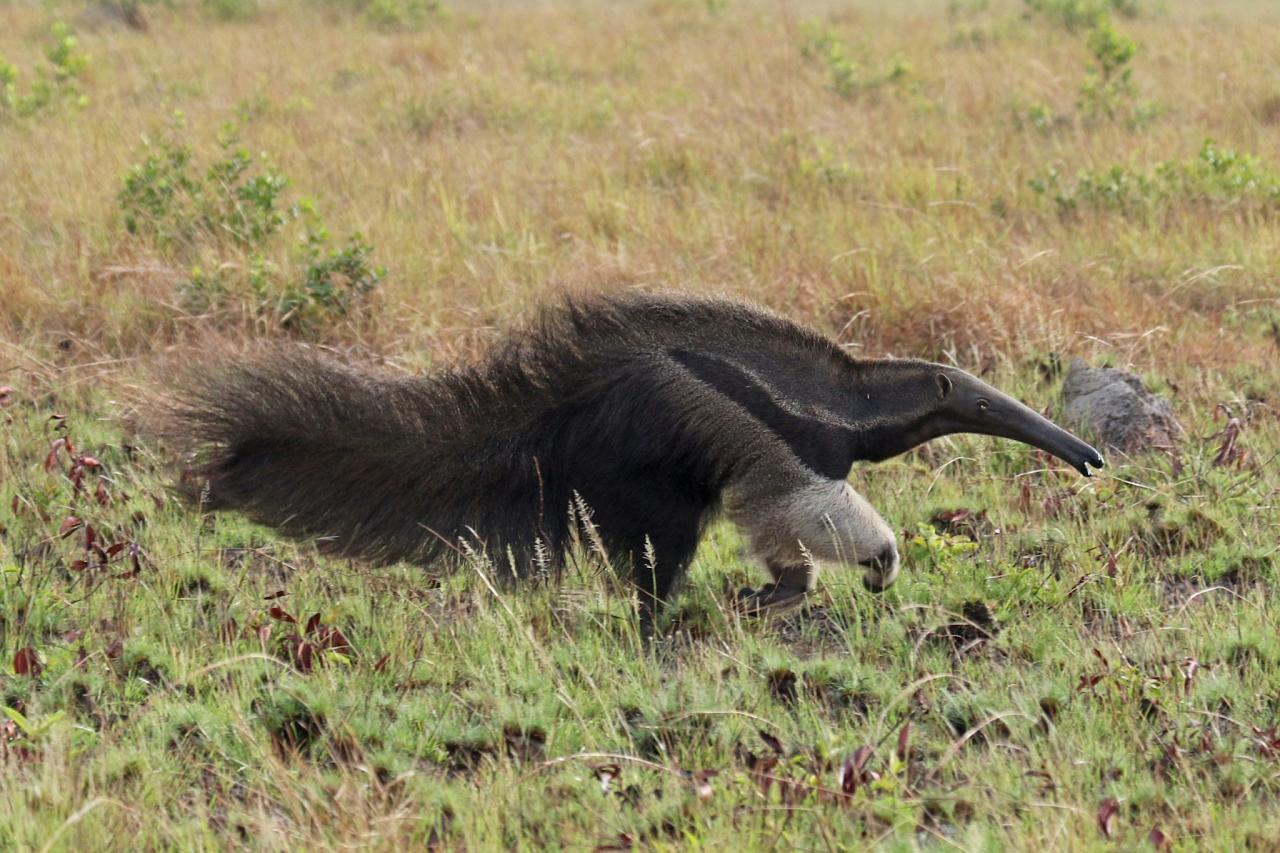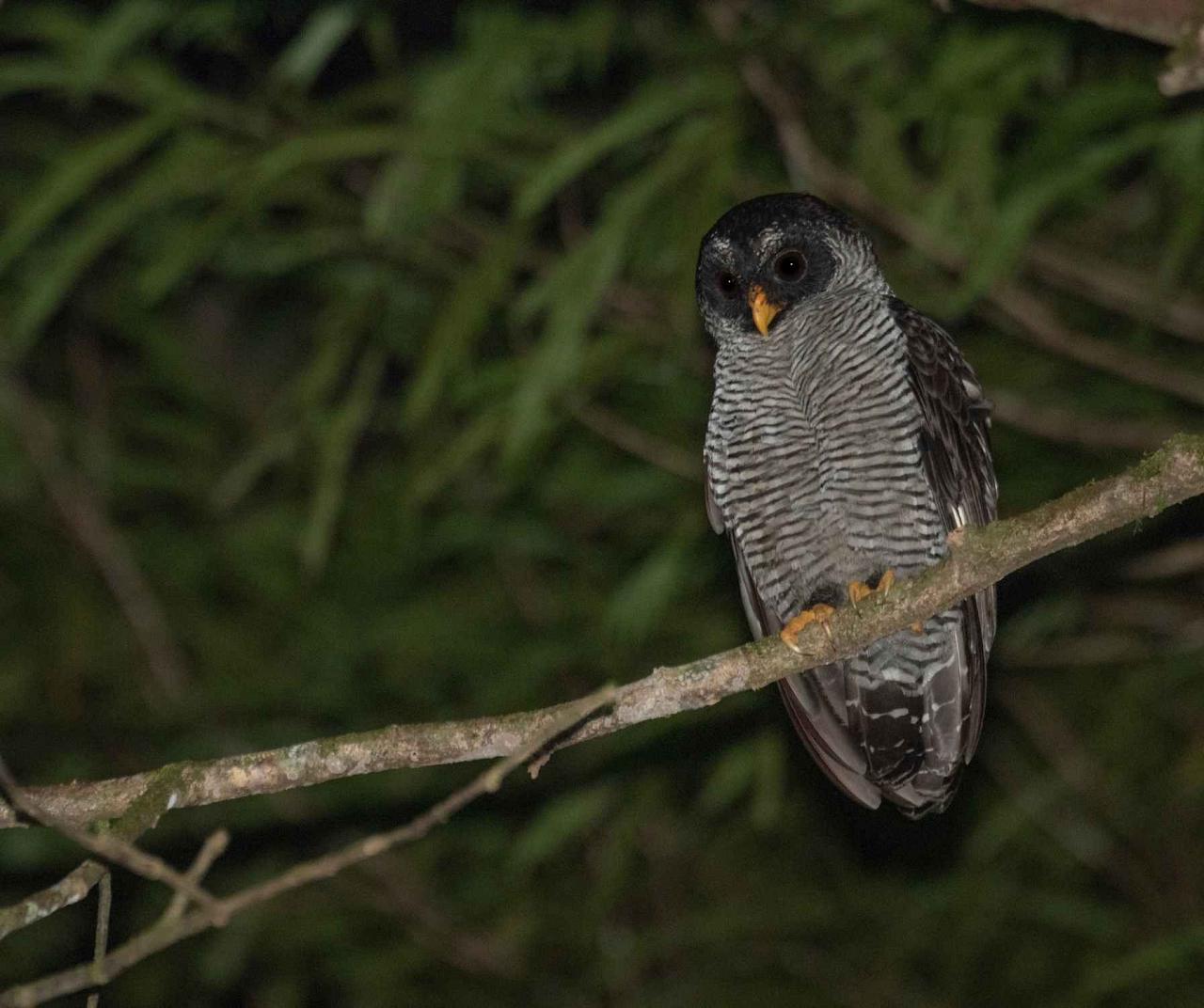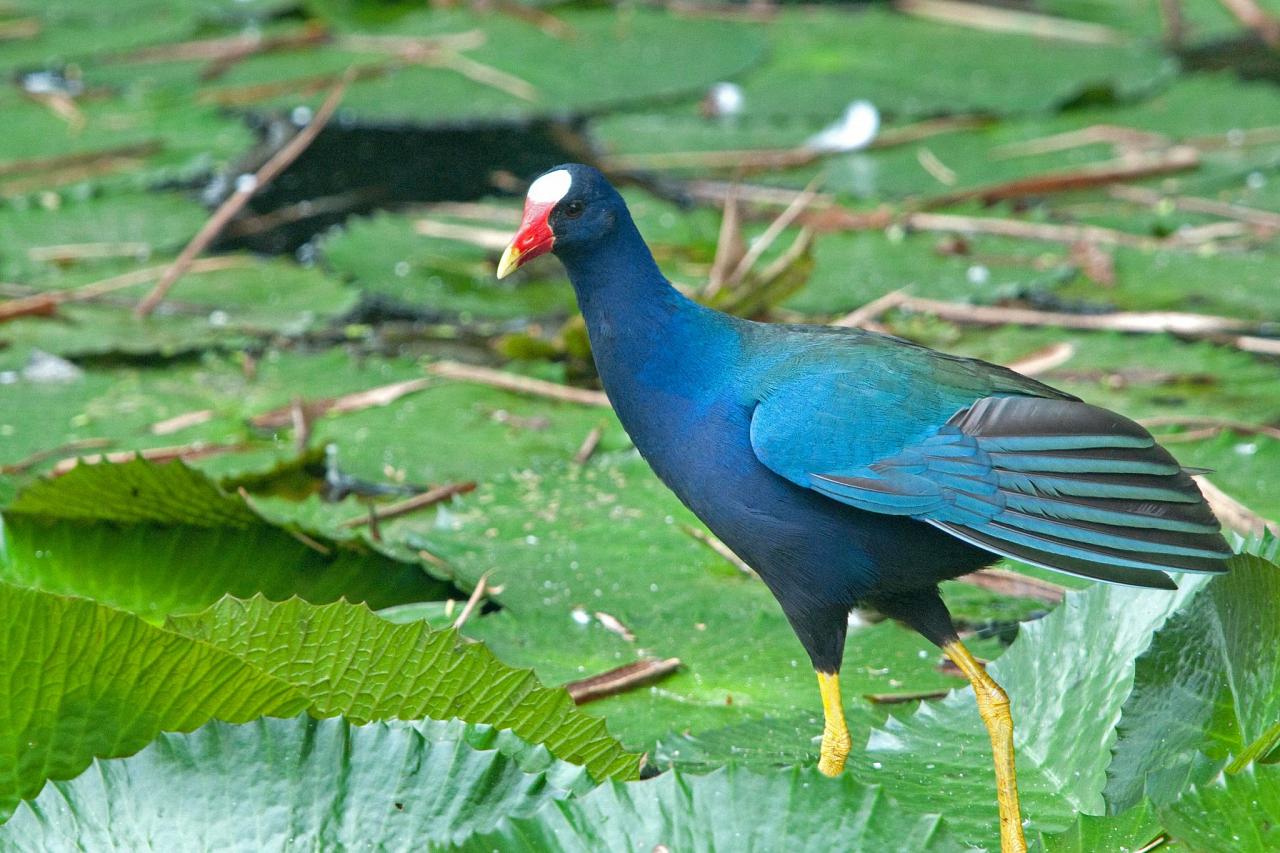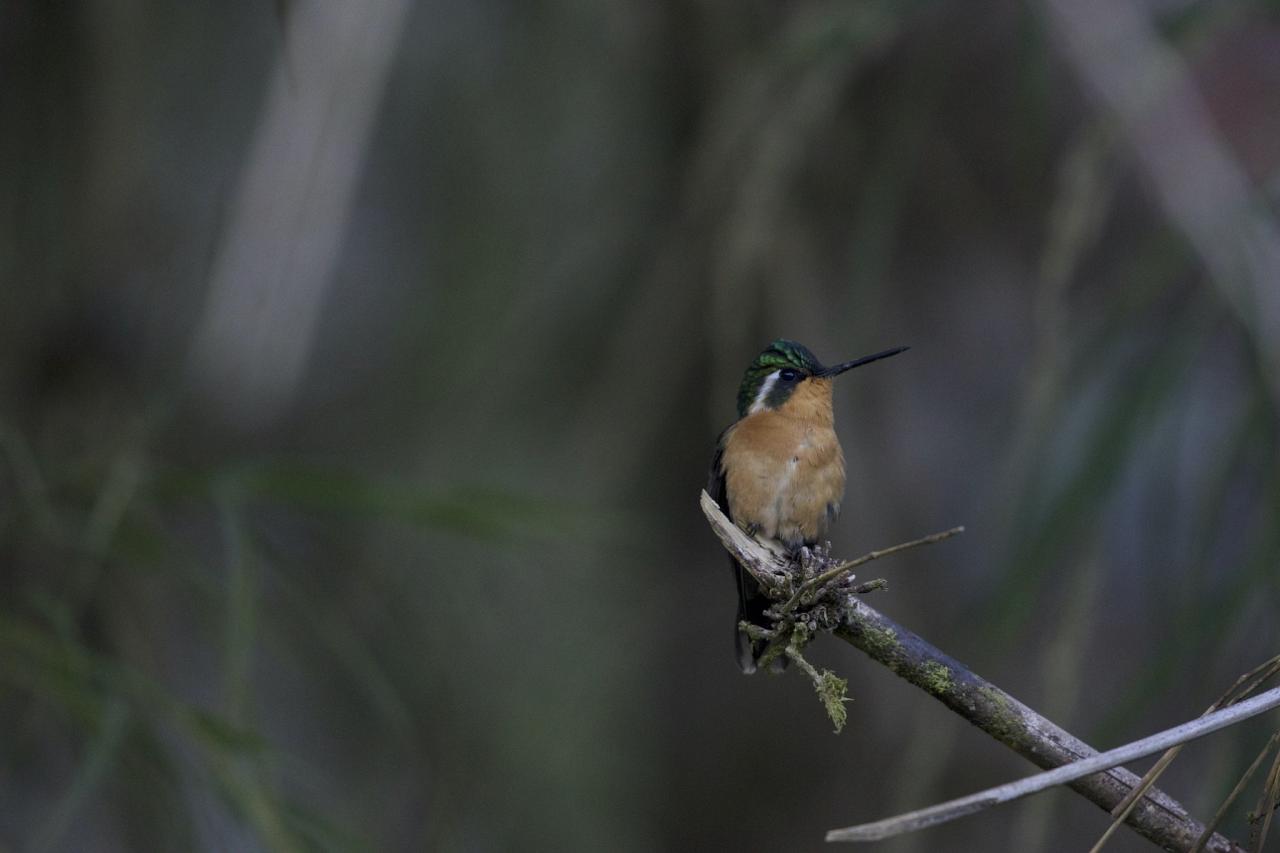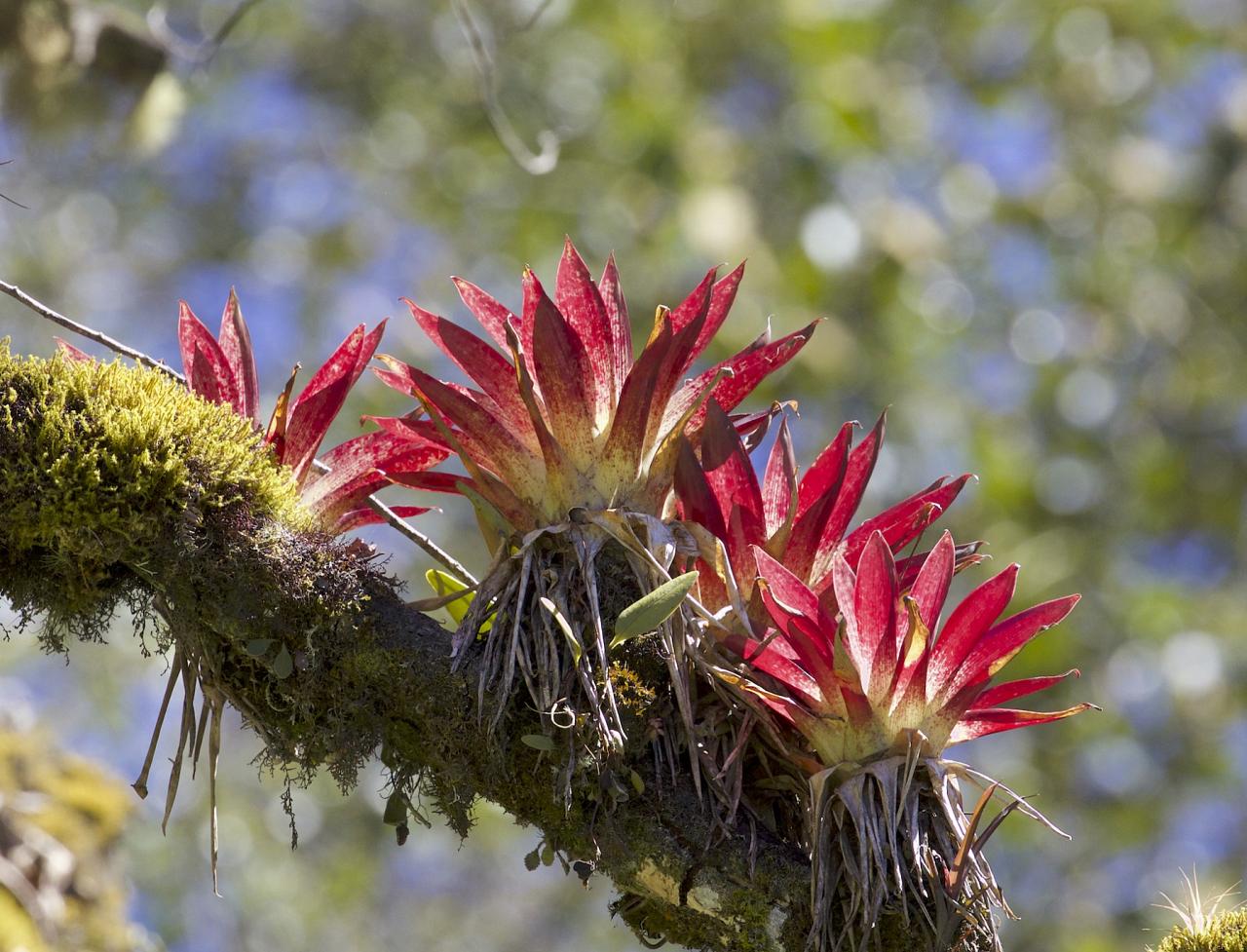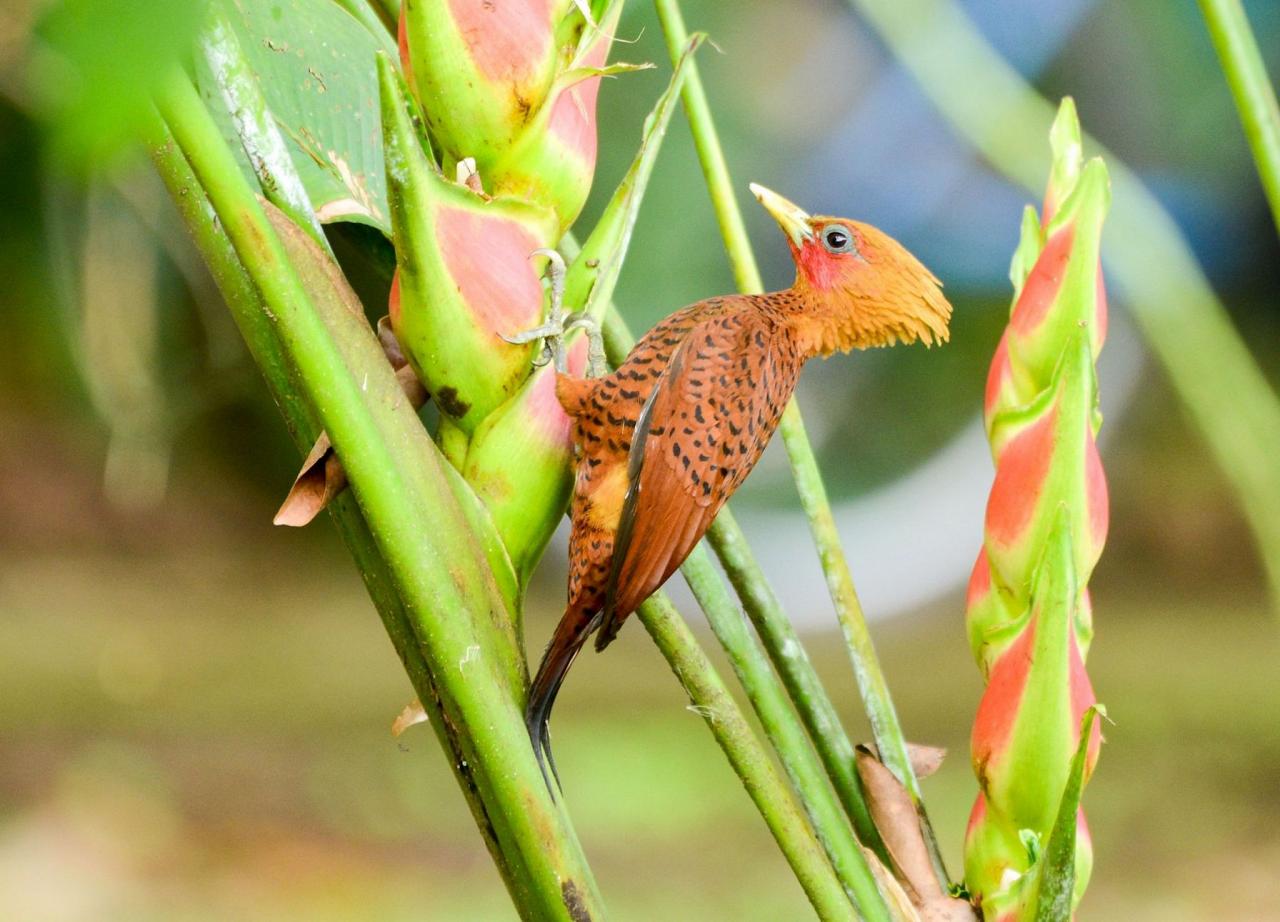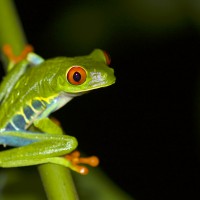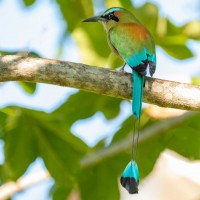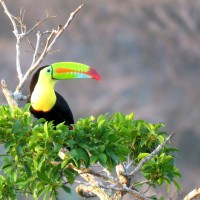- Overview
- Full Itinerary
- Photo Gallery
- Costing
- Travel Details
- Trip Reports
- Know Before You Go
- Other Trips You May Like
Few places rival Costa Rica’s ecological diversity. Over a quarter of the country is protected lands, boasting 850 bird species and 200+ mammals. Why July? Resident birds are just fledging their young, and rains bring life to so many life forms. Afternoon clouds cool down temperatures and we spend a few free afternoons with "choose your own adventure" style activities.
We visit a wonderful mix of habitats, giving you the chance to see numerous species. Immerse yourself in tropical wonder at Arenal Observatory with a volcano in view and Tocu Tent Camp, for a little safari-tent style fun with all the luxuries of glamping while leaving a light footprint.
Take a quick trip to the Neotropics for a fun summer Costa Rica birding tour—what a great way to immerse yourself in Costa Rica’s stunning biodiversity and observe an exciting list of birds and other wildlife.
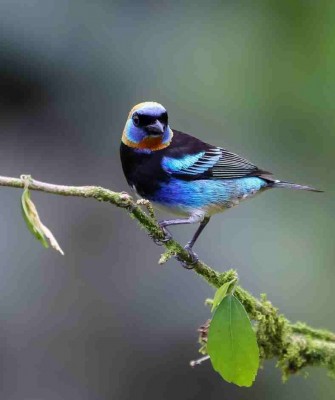
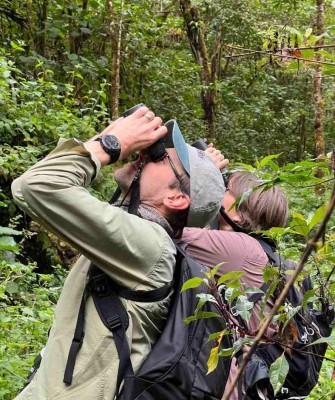
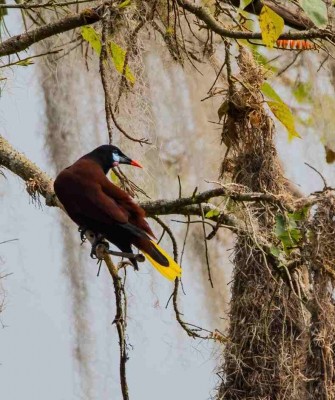
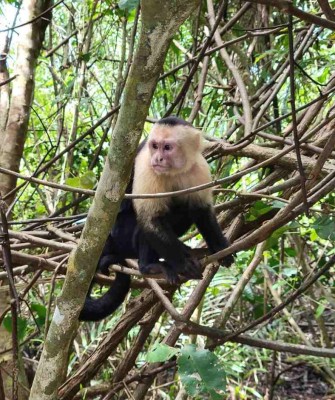
- "Our guide was absolutely outstanding. Extremely knowledgeable - great spotter!, kind, generous, funny. He knows the birds, the country, the field trips, the locations. He had many surprise destinations for us with beautiful scenery and lots of birds." — 2023 Traveler
- "The trip met my expectations exactly. I wanted to see lots of interesting birds and take some pictures, both of which I was able to do...It was extremely well organized and there were no logistical problems at all." — Jim Majure, 2023 Traveler
- "Magical - trip of a lifetime! An amazing exploration of beautiful places that one doesn't often hear about in CR. An abundance and diversity of birds and wildlife." — 2023 Traveler
- "Amazing! If I’d seen a fraction of the birds we saw I would’ve been thrilled..." — 2023 Traveler
- “Experienced Costa Rica from coast to coast. Had amazing guides having incredible knowledge of the birds, wildlife and fauna in Costa Rica. These guys were the best guides I’ve ever had in knowledge of birds, butterflies, habitats and general knowledge of Costa Rica. Also, they were very personable and caring to the participants.” — Caroline DePalma, 2023 Traveler
- “Superb - Birds, Bugs, Blooms, Butterflies and Best Guides! Hard to list all the highlights…Where would I start? The Great Potoo? The American Pygmy Kingfisher? The Three-Wattled Bell Bird? The Hummingbirds? The boat trips. The Eyelash Viper. The Bark Scorpion in our bathroom? How in the name of heavens did Johan and Robert find all those birds? Incredible guides! They kindly adjusted to the varied speeds and limitations of the group members. We were blessed.” — Janet Barrett, 2023 Traveler.
- “A varied and very enjoyable look at several different habitats in a country I knew little about before going there. I had three "target birds" - tiger heron, sun bittern, and swallow-tailed kite - and saw all three of them well. We had two excellent boat trips, on the Cano Negro wetlands and the Tarcoles River estuary. Saw great birds and other wildlife close-up.” — Adrienne Lovelock, 2023 Traveler
Tour Highlights
- Relax at the beautiful Hotel Bougainvillea upon your arrival; bird their 10-acre award winning botanical garden where birds and beautiful sculptures mingle
- View the Arenal Volcano right from your balcony!
- Hike on the famous Arenal 1968 trail
- Admire lowland primary rainforest at La Selva Biological Station
- Boat through Cano Negro National Wildlife Refuge
- Glamp at Tocu Tent Camp for a fun, immersive experience
- Opt for horseback riding, a cooking or cocktail class, or agricultural tour
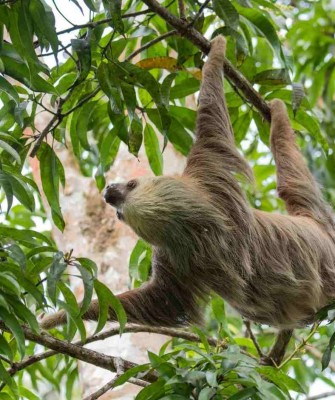
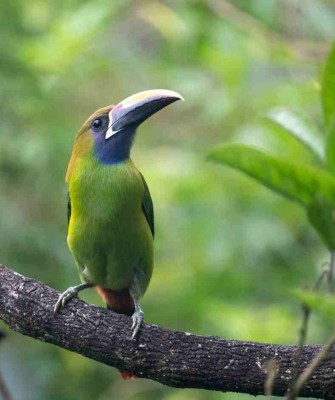
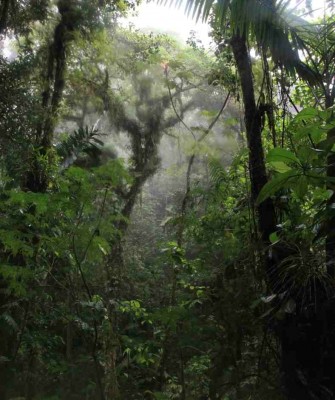
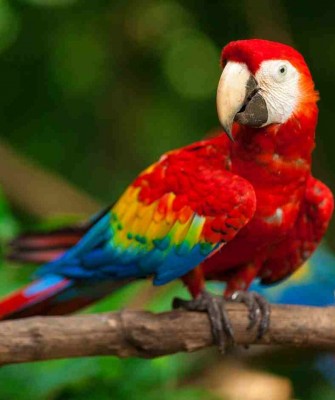
Trip Itinerary
Itineraries are guidelines; variations in itinerary may occur to account for weather, road conditions, closures, etc. and to maximize your experience.
Thurs., July 9 Arrivals in San Jose | Hotel Bougainvillea
Bienvenido a Costa Rica! Please plan to arrive today in San José by 5:00 PM so you can join our welcome dinner and orientation. You are met at the airport for a transfer to our hotel near the airport.
Tonight we gather to enjoy a welcome dinner and the chance to meet your guides and travel companions.
Accommodations at the Hotel Bougainvillea (D)
Fri., July 10 La Selva Biological Station | Arenal Observatory Lodge
We leave early today to head to the lowlands of Sarapiqui, on our way to Arenal—well worth a stop. Enjoy a visit to one of the world’s premier biological stations as we seek out some extraordinary birds. We’ve even seen Great Tinamou nesting here!
We then travel west toward La Fortuna. At an elevation of about one thousand feet, we settle in to awesome digs at Arenal Observatory Lodge set in feature Caribbean foothill rainforest. Due to the perpetually mild and wet climate, this habitat is particularly rich in fruit-eating birds such as toucans, oropendolas, and tanagers. Ant swarms are also a big feature. Most of Costa Rica's obligate antbirds inhabit the understory of this rainforest.
Arenal Observatory Lodge is a particularly comfortable lodge from which to explore this habitat. Collared Aracari, Yellow-throated Toucan, Montezuma Oropendola, and Black-cheeked Woodpecker all squabble over the tasty morsels of papaya, banana, and other fruit on offer. Once the larger birds have had their fill, tanagers such as Crimson-collared, Emerald, and Bay-headed often make a pass at the fruit.
Accommodations at Arenal Observatory Lodge (B,L,D)
Sat.. July 11 Arenal Observatory Lodge
We spend the full day in the area, exploring all the richness of this lodge and its surrounding trails. We can often see Gray-chested Dove, Black-striped Sparrow, and Great Curassow picking off the scraps from above. The lodge grounds also feature lovely flower gardens and thoughtfully placed fruiting trees (mostly Ficus), which attract many birds from the surrounding forest. Row upon row of flowering Blue Porterweed attract Black-crested Coquette, Brown Violetear, Green Thorntail, Violet-headed Hummingbird, and Bronze-tailed Plumeleteer. Wide, carefully maintained, and gently sloping forest trails offer fantastic birding opportunities. Every day is different—even every hour is different! Some of the birds that regularly make an appearance include Dull-mantled Antbird, Thicket Antpitta, Broad-billed Motmot, Semiplumbeous Hawk, and Black-and-yellow Tanager. For those that happen upon an ant swarm, antbird species such as Bicolored, Spotted, and Ocellated Antbird are possible.
The Arenal 1968 trail is a fun off-site hike where we not only enjoy great birding but get the chance to really get a good view of the Arenal Volcano. We may find a mixed flock with Streak-headed Woodcreeper and Ochre-bellied Flycatcher. We listen for the calls of Blue-black Grosbeak, and noisy Hoffman’s Woodpeckers. In open areas there are a number of seed-eating birds and with good views across the valley we are likely to see both Brown Jay and White-throated Magpie-Jays in flight.
Accommodations at Arenal Observatory Lodge (B,L,D)
Sun. July 12 La Fortuna | Los Chiles
We spend the morning enjoying breakfast and some more time on the lodge trails before packing up and heading into the town of La Fortuna for some morning exploring and lunch.
In the afternoon here, we explore Sendero Bogarin, which features secondary growth forest crisscrossed by streams. The birds here are similar but different from those found at Arenal Observatory Lodge. Uniform Crake, White-throated Crake, and Russet-naped Wood-Rail are all common here, although they are not always easy to see. The brushy thickets hold several territories of Black-throated Wren, Fasciated Antshrike, Keel-billed Motmot, and Rufous-tailed Jacamar. Among flocks of tanagers, one sometimes finds the tiny Olivaceous Piculet, the smallest woodpecker in North America. The owner of the property often has a staked out Black-and-white Owl roost, as well as multiple spots to look for both Brown-throated Three-toed and Hoffmann's Two-toed Sloths. After birding here, there is a nice chocolate shop in town with locally sourced chocolate, coffee, and fresh baked goods.
We then head north to our next lodge, which is a fun, tented camp! The luxury, safari-style tents here are prime for a fun summer adventure (don’t worry, each has it’s own en-suite bathroom and shower). This is glamping at its finest. We enjoy dinner at the camp’s restaurant tonight, where fresh, local ingredients are on the menu.
Accommodations at Tocu Tent Camp (B,L,D)
Mon., July 13 Cano Negro National Wildlife Refuge | Your Choice
Awaken to sounds of the forest. After a hearty breakfast, we set out to explore Caño Negro National Wildlife Refuge, one of the most important biological areas of the country and among the most important wetland areas in the world. It is an official Ramsar site, hosting a large area, almost 25,000 acres, replete with lagoons and extensive river habitat.
We have a boat trip this morning. What might we find here? Several kingfishers hunt along the river—Ringed, Amazon, and Green are the species we’re most likely to see. Particularly beautiful are the Bare-throated Tiger-Heron and the elusive Sungrebe; with luck we may also find roosting Boat-billed Heron. On tree limbs hanging over the water we watch for Black-collared Hawk and Snail Kite. Many describe this area as similar to the Florida Everglades—especially as we approach Lago Caño Negro, where we may find American Pygmy Kingfisher, Snowy Cotinga (wow!), and Bare-crowned Antbird, as well as Anhinga, Roseate Spoonbill, Black-bellied Whistling-Duck, Purple Gallinule, and large numbers of Snowy and Great Egrets. With luck we could find Yellow-breasted and Gray-breasted Crakes.
A few (by name) remind us we are on the border of Nicaragua: Nicaraguan Seed-Finch, Nicaraguan Grackle, and Nicaraguan Slider-Turtle. In the forest margins, watch for Lineated Woodpecker, Scarlet-rumped Tanager, and Pied Puffbird.
In addition to birds, we may find Green Basilisk, Green Iguana, river turtles, Spectacled Caiman, American Crocodile, and more. One never knows what might be spotted here—the area is still wild enough to support populations of rare species such as Jabiru!
We return for lunch at our camp, followed by a choose your own adventure activity this afternoon. We’ve arranged for you to have a free afternoon with a complimentary activity. You can choose from horseback riding, an agricultural tour, a Costa Rican cooking class, or a cocktail class.
Meet back up with the group for dinner and to go over the day’s checklist.
Accommodations at Tocu Tent Camp (B,L,D)
Tues. July 14 Morning Activity of Choice | San Jose
Wake up early to sounds of the forest just outside your luxury tents. Enjoy a delicious breakfast at camp, then you can once again choose from riding, an agricultural tour, a cooking class, or cocktail class. So don’t worry, you get to pick your two favorite activities (or if you love one enough, repeat it!).
Birders may prefer to continue birding on the lush grounds with time to photograph and study bird behavior in more detail. Species common in the area include White-lored Gnatchatcher, Long-billed Gnatwren, Tropical Mockingbird, Clay-colored Thrush, several colorful euphonias, orioles and tanagers, and a favorite of many, Red-legged Honeycreeper.
Lunch is at camp before we set off for San Jose. We arrive and settle into our hotel before a final celebratory dinner, recounting our favorite birds and activities of the trip and going over our final checklist of the trip.
Accommodations at D'Sabana Hotel (B,L,D)
Wed., July 15 Departures
After breakfast at the hotel, our flock disperses. Adios to Costa Rica (for now!) (B)
Cost of the Journey
Cost of the journey is per person, based on occupancy: $3990 DBL / $4870 SGL, from San José, Costa Rica. Cost includes seven nights’ accommodations, all meals as noted in the itinerary, airport transfers, ground transportation, professional guide services, park and other entrance fees, and miscellaneous program expenses.
NEW! all tips other than your NJ guide (optional) and local guide are included (this includes tips for your driver, lodge and staff, day activities, meals and other services).
Not included is round-trip airfare to and from San José, personal expenses such as laundry, telephone, or drinks from the bar.
Travel Details
Please plan to make air travel plans only after the minimum group size has been met. We will send you a confirmation email as soon as the trip has been confirmed.
Arrival and Departure Airport: Juan Santamaria International Airport (SJO) in San Jose
Arrival Details: Please plan flights to arrive July 9, 2026 no later than 5:00 PM if you wish to join the group for dinner.
Departure Details: Please plan flight departures on July 15, 2026 at your leisure.
Travel Tips: If you arrive early to rest up from your travels, we can book extra nights for you with a transfer to our hotel, the Hotel Bougainvillea. If you prefer to stay downtown and see the city, we have listed a few hotel recommendations below. If you choose to stay downtown, you’ll need to arrange a taxi or driver with the hotel to return to the airport for pickup or head to the D'Sabana on the tour start date. There are many things to see in San Jose if you’re up for exploring! If you enjoy museums, you’re in luck because some of the best in Costa Rica are located right in San Jose. The Museo Nacional de Costa Rica has exhibits highlighting the archaeology and history of Costa Rica as well as a butterfly garden. The Pre-Columbian Gold Museum has one of the largest collections of gold artifacts in Latin America, some of which date back to 500 CE. If you’re looking to do some shopping or try some local food, head over to the Mercado Central (Central Market). You’ll find vendors selling fruits and vegetables, local food dishes, and a wide variety of souvenirs.
Downtown Hotel Recommendations: Hotel Presidente Hotel Grano de Oro
Airport Hotel Recommendations: D’Sabana Hotel San Jose
Entry Requirements: See "Essential Information" section under the "Know Before You Go" tab.
Browse below for trip reports and species lists from past versions of this and other tours from this destination.
Costa Rica
- January 2018
- October 2018
- January 2019
- March 2019
- January 2020
- March 2021
- December 2021 (Christmas in Costa Rica)
- February 2022
- March 2022
- December 2022
- January 2023
- February 2023
- July 2023
- October 2023
- December 2023 (Christmas Tour)
- January 2024
- February 2024
- July 2024
- October 2024
- January 2025
- February 2025 (Arenal Volcano)
- March 2025
Monteverde
- March 2022
- March 2023
- March 2024
- March 2025
Northern
- March 2012
- January 2013
- January 2017
Southern
- February 2007
- January 2017
- January 2018
- January 2019
- February 2023
Essential Information +
Pace & Protocols +
Packing List +
Suggested Reading List +
Useful Links +
Photo credits: Banner: Black-cheeked Woodpecker by Greg Smith (GS); Lizard by Sandy Sorkin; Monteverde Suspension bridge; Squirrel Cuckoo by Sandy Sorkin; Keel-billed Toucan by Doug Greenberg (DG); Black Howler Monkey by Peg Abbott (PA); Gallery: Collared Aracari; Arenal Volcano; Black-and-white Owl; Giant Anteater, Naturalist Journeys Stock; Purple Gallinule, Tom Dove; Purple-throated Mountain Gem, GS; Savegre Bromeliads, GS; Chestnut-colored Woodpecker, SS. Primary Thumbnail: Birding, Karen Holmen; Montezuma Oropendola, Anindya Sen; Golden-hooded Tanager, White-faced Capuchin, John Trezise Secondary: Hoffman’s Two-toed Sloth, Emerald Toucanet, Scarlet Macaw, Rainforest Northern Barred Woodcreeper Phil Yates, courtesy Operador Latino; Black Guan, DG; Lesson's Motmot, Mike Boyce; Central American Squirrel Monkey, PA; View from Celeste Mountain Lodge, celestemountainlodge.com; Collared Aracari, James Adams; Red-legged Honeycreeper, GS; Great Curassow, SS;







